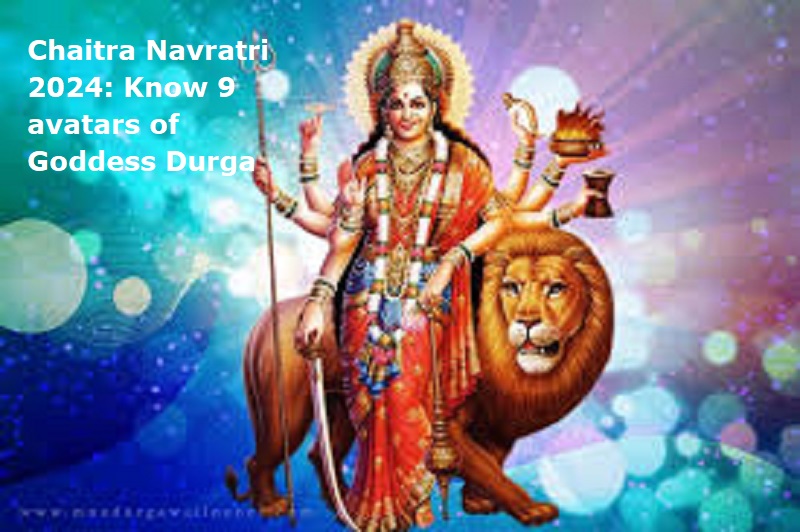
New Delhi: Chaitra Navratri or Vasant Navratri is a Hindu festival that takes place during the spring season. There are two main Navratri festivals in a year – one during the spring and another in autumn called the Sharad Navratri. Chaitra Navratri and Sharad Navratri have numerous religious beliefs and importance connected to it.
Chaitra Navratri is an annual nine-day festival that begins on the first day of the Hindu Luni-Solar calendar. This year, it will start on April 9 and end on April 17. The nine days of Navratri are dedicated to the nine forms of Goddess Shakti.
All nine days of the Navratri are devoted to nine different forms of Durga or Nava Durga. The nine avatars of Durga are: Shailputri, Brahmacharini, Chandraghanta, Kushmanda, Skandmata, Katyayani, Kaalratri, Mahagauri and Siddhidatri. Each avatar symbolises unique virtues and holds immense significance in Hindu mythology. According to manuscripts, Lord Rama, the seventh embodiment of Lord Vishnu, was born on Rama Navami.
Also Read; Chaitra Navratri 2024: Know 9 colours and its significance
Shailaputri: The first form of Navadurga, Shailaputri, represents the daughter of the mountains. She embodies strength, determination, and purity. Devotees seek her blessings for stability and courage.
Brahmacharini: The second manifestation, Brahmacharini, symbolises austerity and penance. She is depicted as walking barefoot, holding a rosary and a water pot. Worshipping her is believed to bestow wisdom, knowledge, and spiritual growth.
Chandraghanta: This third form of Durga, Chandraghanta, is depicted with a half-moon adorning her forehead, giving her the name. She signifies peace, serenity, and bravery. Devotees pray to her for courage and protection from evil forces.
Kushmanda: Kushmanda, the fourth avatar, is revered as the creator of the universe. She is depicted with eight hands, holding various weapons and a rosary. Worshipping Kushmanda is believed to bestow health, wealth, and prosperity.
Skandamata: The fifth form, Skandamata, is worshipped as the mother of Lord Skanda (Kartikeya). She symbolises motherly love, compassion, and nurturing. Devotees seek her blessings for the well-being and success of their children.
Katyayani: Katyayani, the sixth manifestation, is known for her fierce form. She is worshipped for courage, victory, and protection. Devotees pray to her to overcome obstacles and challenges in life.
Kaalaratri: Kaalaratri, the seventh avatar, is revered as the destroyer of darkness and ignorance. She is depicted with a dark complexion, riding a donkey, holding a sword, and blessing her devotees. Worshipping Kaalaratri is believed to eliminate fear and grant inner strength.
Mahagauri: Mahagauri, the eighth form, symbolises purity and serenity. She is depicted in white attire, radiating peace and tranquillity. Devotees seek her blessings for the purification of mind, body, and soul.
Siddhidatri: The ninth and final manifestation, Siddhidatri, is worshipped as the bestower of supernatural powers and blessings. She is depicted with four arms, holding a lotus, mace, discus, and conch. Devotees pray to her for spiritual evolution and attainment of divine knowledge.

Post Your Comments